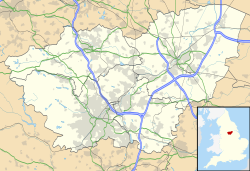| Shrewsbury Hospital | |
|---|---|
 Shrewsbury Hospital | |
| General information | |
| Town or city | Sheffield |
| Country | England |
| Coordinates | 53°22′38″N1°27′26″W / 53.3772°N 1.4571°W |
| Construction started | 1825 |
| Completed | 1828 |
Shrewsbury Hospital refers to a row of almshouses and a chapel in Sheffield, South Yorkshire, England.
